Beijing's Internet-famous Sites in 2022: Culture and Art
1. Beijing Eight Imperial Handicrafts Museum
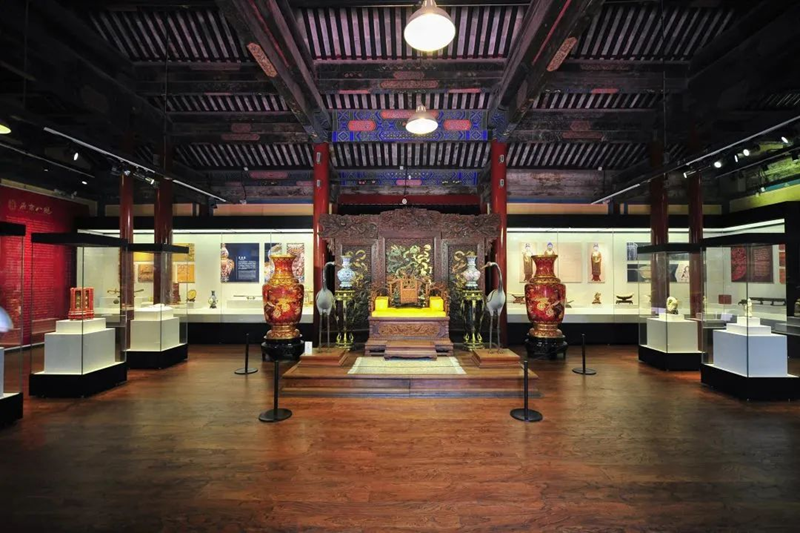
(Photo via VCG)
Situated in the Cheng'en Temple, an ancient building of the Ming Dynasty, on the Moshikoudajie of Shijingshan District, the Beijing Eight Imperial Handicrafts Museum houses hundreds of pieces or sets of crafts, including the gold lacquer inlaid, filigree inlaid metal art, cloisonne, ivory carving, jade carving, carved lacquerware, Beijing embroidery and palace carpets (collectively called "the Beijing Eight Imperial Handicrafts"), as well as ancient woodcarvings, tree-root carvings, and stone carvings. It is the first registered non-state-owned museum in Shijingshan District officially approved by the Beijing Municipal Cultural Heritage Bureau and the Beijing Municipal Civil Affairs Bureau. It is the first intangible-cultural-heritage-themed museum in a key historical and cultural site under national-level protection to display palace arts and experience palace craftsmanship. Also, it is the first one in China jointly created by nearly 100 masters of arts and crafts and intangible heritage inheritors over a decade. The museum was officially opened to the public in July 2021.
The museum was recognized by the All-China Federation of Returned Overseas Chinese as a member of the ninth group of the International Cultural Exchange Bases for Overseas Chinese in August 2021 and selected as one of the "Top Ten Cultural Consumption Landmarks of the 2021 Beijing Cultural Consumer Brands List" in December 2021.
Address: No. 29, Moshikou Street, Shijingshan District, Beijing (Cheng'en Temple)
2. Reignwood Theater

(Photo via VCG)
Located in No.8, Yong'andongli, Jianwaidajie, Chaoyang District, and designed by a famous Italian company, the Reignwood Theater (formerly known as the Reignwood Zijin Theater) boasts 1,200 sqm of European-style architecture and top-class international equipment, as well as a unique multi-functional scene conversion system, which enables a free conversion to the theater, banquet or dance floor mode in real time. Its state-of-the-art stage can accommodate artistic performances such as symphonies, dance, concerts, operas, and drama, and various events like meetings, banquets, and exhibitions.
In 2009, the Asia Young Artist Training Center was established, and Maestro Plácido Domingo, one of the Three Tenors in the world, was invited to be the artistic advisor to the theater and its training center. Over the past decade, nearly 100 cultural performances have been held here, making it a cultural exchange platform featuring "When East Meets West".
In 2022, a constellation-themed drama called Wishing Castle was created, consisting of 12 parts, one for each constellation. The drama sets a precedent for the deep integration of constellation culture and drama.
Address: No. 8, Yong'an Dongli, Jianguomenwai Street, Chaoyang District, Beijing
3. Liaocang Immersive Digital Art Museum
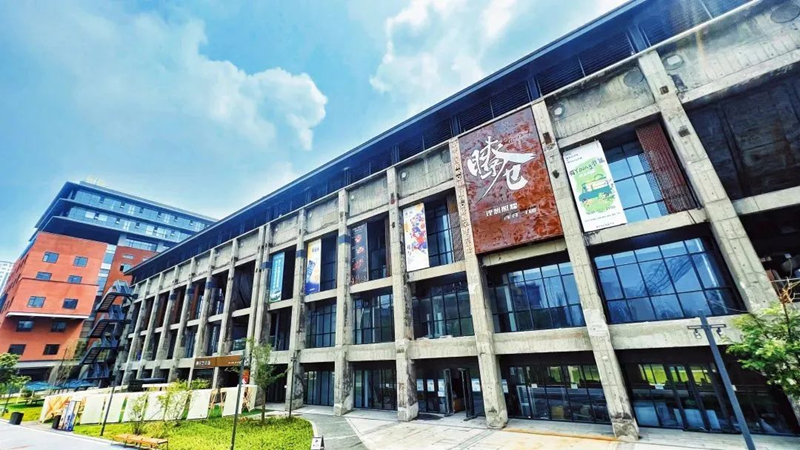
(Photo via VCG)
Located in the Shougang Park of Shijingshan District, the Liaocang Immersive Digital Art Museum is a new commercial zone renovated from a 30-year-old factory. The XR technology has been applied to build a digital sci-fi commercial zone, including the immersive digital light-shadow exhibition halls, a museum housing both digital and physical collectibles, and a sci-fi-themed library. It is currently the only one in China that features physical and digital collectibles.
The museum uses digital content production and program development tools such as visual programming and 3D modeling animation to create digital works of art and AR/VR NFTs. Continuing to commit to the integration of virtual reality and cultural tourism, the museum will build itself into a landmark of digitalization and sci-fi culture, forming a distinctive and replicable Liaocang mode.
Address: Building No. 2, Jin'anqiao, No. 68, Shijingshan Road, Shijingshan District, Beijing
4. Mei Hou Si Shi Jingshan Civic Cultural Center
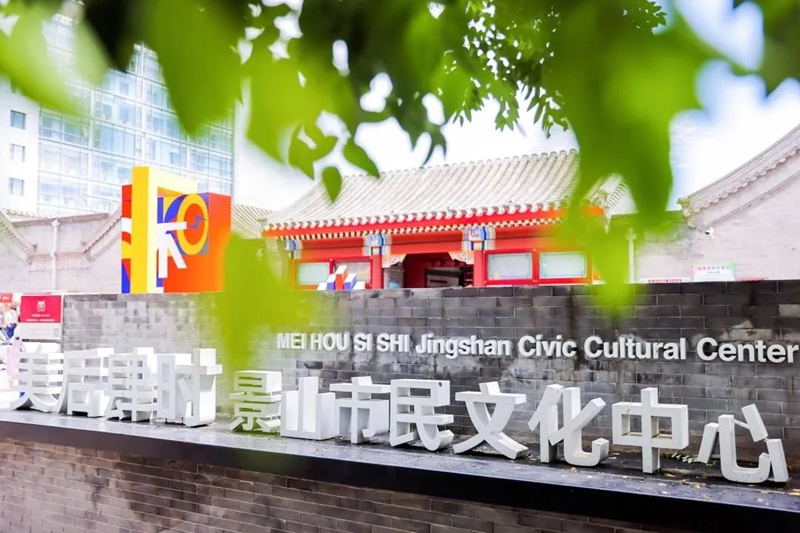
(Photo via VCG)
The Mei Hou Si Shi Jingshan Civic Cultural Center, the largest primary-level public cultural venue in Beijing's old urban area, covers an area of 5,411 sqm and was fully opened in September 2020. Its name, "Mei Hou Si Shi", is taken from its location (No.40, Meishuguanhoujie), which means that beauty is eternal as seasons change.
The center brings reading, drama, Chinese classics, art, cultural creativity, delicacies, and gardening into people's lives. It serves as a public cultural service platform that is inclusive, interactive, experiential, and rich in cultural connotation. More than 1,000 non-profit public cultural activities are held here each year. Meanwhile, various art training courses such as calligraphy, painting, photography, instrumental music, vocal music, and dance are provided to meet citizens' cultural demands.
Address: No. 40. Meishuguanhou Street, Dongcheng District, Beijing
5. Sijin-Huilongguan City Reception Hall
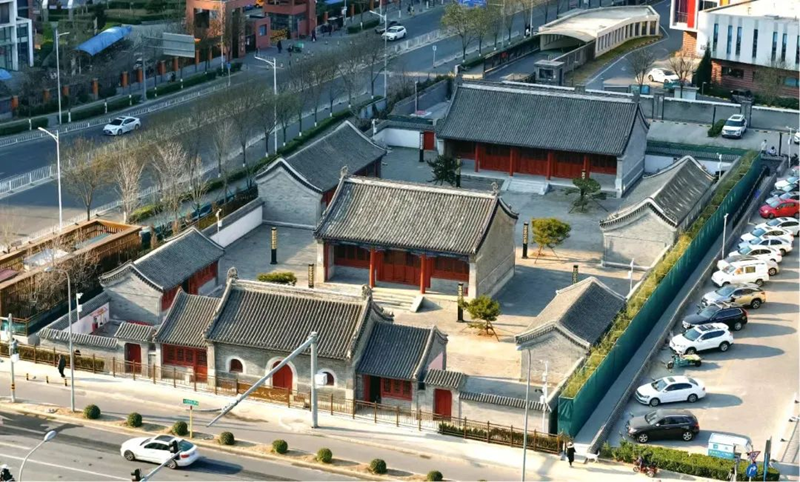
(Photo via VCG)
Formerly known as the Yuguang Temple, the Sijin-Huilongguan City Reception Hall in Changping District has more than 300 years of history. "Sijin" means to live beautiful moments with citizens. At Sijin, tourists can learn about the profound history of ancient buildings and experience the diversity of modern cultural life.
Sijin has currently held outdoor concerts, yoga and movies, music workshops, astronomical observation, and other cultural and artistic events.
Address: About 90 meters northeast of the southeast gate, central area of Rongze Jiayuan, Longyu East 1st Road, Changping District, Beijing (Yuguang Temple)
6. Taihu Performing Arts Workshop

(Photo via VCG)
The Taihu Performing Arts Workshop, also known as "Yuhui PARK", is located in Taihu Town. Combining the ecology and performing arts based on its own resource advantages, the site successfully transformed from the original fish farm into the Taihu Performing Arts Workshop in 2019. With a beautiful ecological environment, the park boasts red-brick buildings featuring a blend of Chinese and western styles. These buildings with an artistic theme of lively fishes are full of cultural characteristics.
The Qinglitang Theater, as the core theater at the Taihu Performing Arts Workshop, can accommodate 500 spectators and mainly holds special, medium, and large-scale performances and various celebrations. It once successfully hosted multiple international performances, such as the "Beijing's First Jazz Festival".
Located on the third floor of the Qinglitang Theater, the immersive small theater "Teahouse" reproduces the scene of the teahouse described in Lao She's original work and can hold up to 100 spectators. Currently, it serves as a performance base for Beijing Quju Opera Troupe's immersive Quju Opera performances and Beijing's Folk Arts of the Beijing Traditional Folk Arts Troupe, with approximately 350 performances per year.
Address: 700 meters south of Hujiafa Village Committee, Taihu Town, Tongzhou District, Beijing
7. WA Art. Architecture Museum
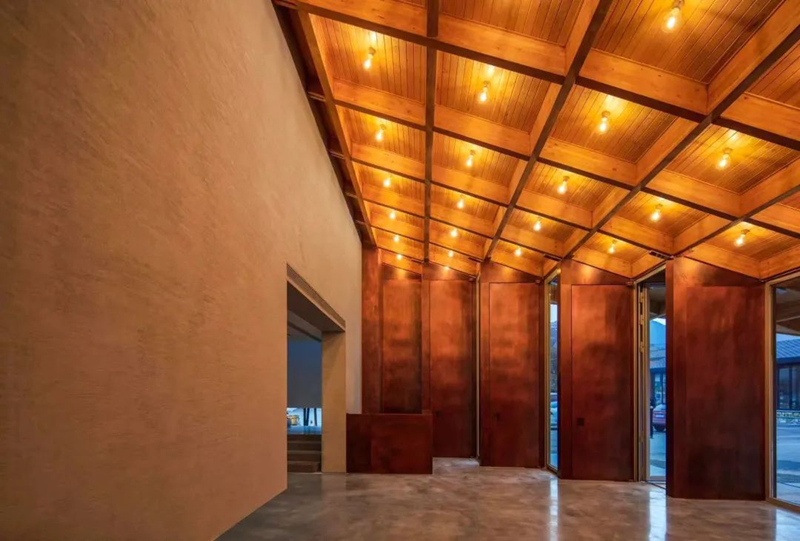
(Photo via VCG)
Nestling in Beigou Village, Bohai Town, Huairou District, the WA Art. Architecture Museum is backed by the Mutuanyu Great Wall and surrounded by mountains with gorgeous scenery. The glazed tiles on the exterior of the main building show different lights and shades from day to night. The museum is an internet-famous site featuring culture and art in Beijing.
The birth of the WA Art. Architecture Museum is not only a new experiment in developing and promoting Beigou Village's profound culture but an exploration of the relationship between the countryside and the city by using artworks to amplify local cultural features and further demonstrate the significance of the countryside.
Address: No. 130, Beigou Village, Bohai Town, Huairou District, Beijing
8. One Art Museum

(Photo via VCG)
Located in the Zhongguancun No.1, Beiqinglu, Haidian District, One Art Museum is a non-profit social service institution founded by the Beijing Shichuang Technology Park Development Construction Co., Ltd. in 2019. The museum consists of exhibitions, collections, theoretical research, art publishing, derivative development, public art education, and other departments. It continues to form a professional and systematic art museum system. Aiming at the innovative combination of science, technology, and art, it continuously and comprehensively sorts out and displays the achievements of Chinese contemporary art through technology, promoting the research and development of contemporary art. Since its inception, the museum has held 15 exhibitions and more than 100 non-profit public art events, becoming a wonderful space rich in cultural and art activities for people in the northern region of Haidian District.
Address: Building No. 2, Area No. 3, Courtyard No. 81, Beiqing Road, Haidian District, Beijing
9. Zhengyici Theater

(Photo via VCG)
The Zhengyici Theater, once an ancient temple in the Ming Dynasty, is China's first indoor theater with a history of more than 300 years. Praised as the "living fossil of Chinese theaters", it has a unique cultural status.
As China’s oldest pure wood-structured theater, the Zhengyici Theater has witnessed Chinese opera art's birth, development, and thriving. Numerous opera masters performed here. The theater preserves the artsy features of several hundred years ago. Apart from watching performances, visitors can walk in the corridor and admire the carved mahogany railings shining under the light.
Address: No. 220, Xiheyan Street, Qianmen, Xicheng District, Beijing
10. National Museum of Modern Chinese Literature

(Photo via VCG)
The National Museum of Modern Chinese Literature is the first literary museum in China and the largest in the world. With a total area of more than 30,000 sqm, it mainly displays the development history of modern and contemporary Chinese literature, as well as literary achievements of significant writers and schools of literature; and collects, preserves, sorts out, and studies the works, reviews, cultural relics, and other literary resources of modern and contemporary Chinese writers. The museum serves as a literary exhibition center as well as a literary library and archive. It is a center of modern and contemporary Chinese literary resources, a treasure house of modern and contemporary Chinese literature, and a research center for modern and contemporary literature. Initiated by the literary giant Ba Jin, the museum boasts more than 800,000 manuscripts and letters from famous writers.
Address: No. 45, Wenxueguan Road, Chaoyang District, Beijing
11. Museum of Chinese Gardens and Landscape Architecture
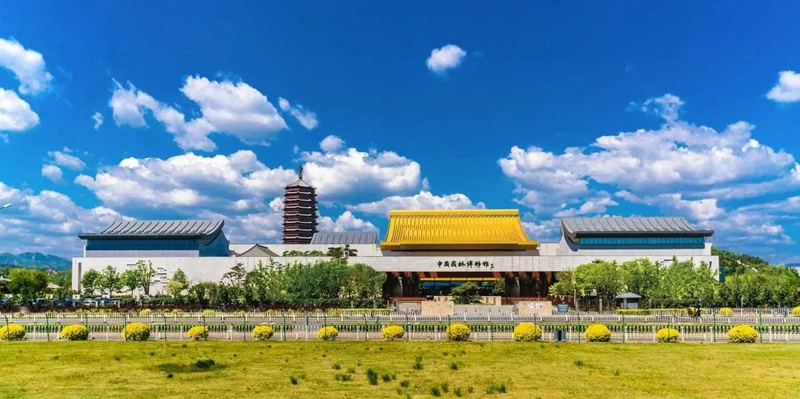
(Photo via VCG)
The Museum of Chinese Gardens and Landscape Architecture is the first national museum of its kind in China. Built on the principle of "Chinese Gardens, Ideal Homes", it is a non-profit cultural institution that collects characteristic garden relics, studies the historical value of gardens, displays the charm of garden art, and carries forward China's excellent traditional culture. Known as a "living museum", it serves as an important window to fully display Chinese gardens' long history, splendid culture, diversified functions, and brilliant achievements.
The museum is mainly composed of exhibition halls, indoor exhibition gardens, and outdoor exhibition areas. Specifically, the exhibition halls include the Chinese Ancient Garden Hall and Chinese Modern Garden Hall, as well as four thematic halls, namely the World Famous Garden Hall, Chinese Garden and Landscaping Culture Hall, Chinese Garden Technique Hall, and Garden Interaction Hall. The indoor exhibition gardens consist of the Chang Garden, Yu Yin Mountain Garden, and Pian Shi Shan Fang Rockery Garden. The outdoor exhibition areas include three northern gardens, namely the Pagoda Shadows Garden, Alpenglow Garden, and Banmu Garden, according to the terrain characteristics.
Address: No. 15, Shejichang Road, Fengtai District, Beijing

